Fae Farm on Switch
The cozy game phenomenon is a hard one to pin down. More than any single gameplay mechanic or genre setting, it’s about instilling in the player a specific feeling. Fae Farm is perhaps the first game to look at the entirety of the diverse array of titles that fit under the cozy games umbrella and distill them into something definitive. It succeeds, mostly, but falls fatally short in one of the defining elements of the cozy experience.
Inheriting your plot of land from a recently deceased relative has always seemed a little morbid as a starting point for games that are supposed to feel calming and safe. Fae Farm’s opening is more aspirational, with your character adventuring to the land of Azoria upon finding a message in a bottle. This heroic answering of the call to action may be switching one trope for another, but it’s a welcome change that sets the tone for the game and the role you’ll be playing in it.
Each of the game’s chapters is introduced with a charmingly illustrated slideshow accompanied by a narrative told in rhyme. These cutscenes emphasize the storybook nature of Fae Farm — a game that does things simply, sweetly, and in short doses. There’s a plot here, but it’s intentionally thin in the typical fairytale fashion.
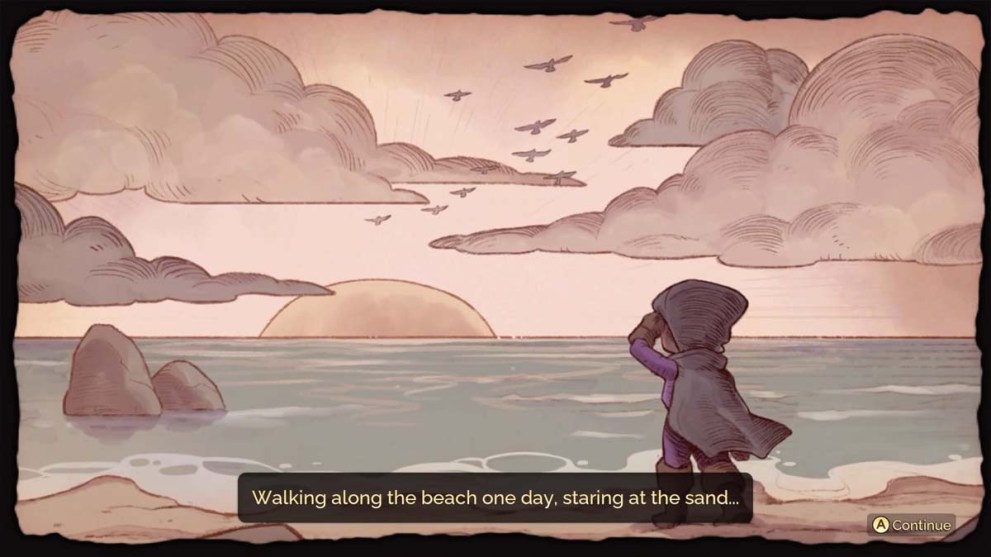
As the mayor explains to you upon first washing up on the island, their problems are many — overgrown thorns, mysterious mists, active volcanos, and raging blizzards have sprung up, all blocking off access to other parts of the island. Of course, in keeping with the pressure-free tone of the game, these are presented as problems to be solved rather than existential threats as you might expect from your typical RPG.
With no pressing risk to the island and its inhabitants, you’re free to go about your business at as leisurely a pace as you like. Which is nice because that’s where Fae Farm is at its best.
The core gameplay loop is neatly portioned into 18-minute segments — the length of one in-game day. Depending on your priorities you might spend this time doing side-quests for the islanders, harvesting resources, crafting, or decorating and maintaining your house and farm.
As for the main questline, each area of the island has a similar chain of quests. The first batch of these can be swiftly completed as they serve to introduce you to the new area, its inhabitants, and any new gameplay mechanics. Things then slow down considerably when you gain entry to the area’s dungeon.
Each dungeon is 25 monster-filled levels deep, and you’ll need to reach the final level to progress the main story and open the next area of the island. This is impossible to do on your first run as there simply isn’t enough time in the day for you to progress through every level. Thankfully you can craft seals, which when placed on the podium at the start of each level, allow you to instantly teleport there the next time around. This effectively means that each time you run through the dungeon you can cut a few more levels off for the next time around.
At first, this sudden roadblock feels jarring after having breezed through several quests in quick succession. On reflection, it’s a smart way of forcing you to take your foot off the accelerator and spend some time with the rest of the game.
You may spend a day catching fish to cook for stamina-replenishing foods, so that the next day you can head back into the dungeon to mine the resources you need to craft more seals, then spend the next day decorating your house while you wait for your crafting machines to turn out your items.
Of course, you can skip all these superfluous activities and power through the dungeon as fast as possible, but you’d be hard-pressed not to get distracted by something along the way. If you’ve come to Fae Farm primarily for its RPG elements, combat, and narrative, you’re going to be underwhelmed.
That isn’t at all to say that they’re bad though. They work in harmony with the rest of the game, keeping each day feeling fresh, and helping to give you a sense of momentum in those crucial early hours when the long-term dream of having your perfect house and farm still seems too far off to realize.
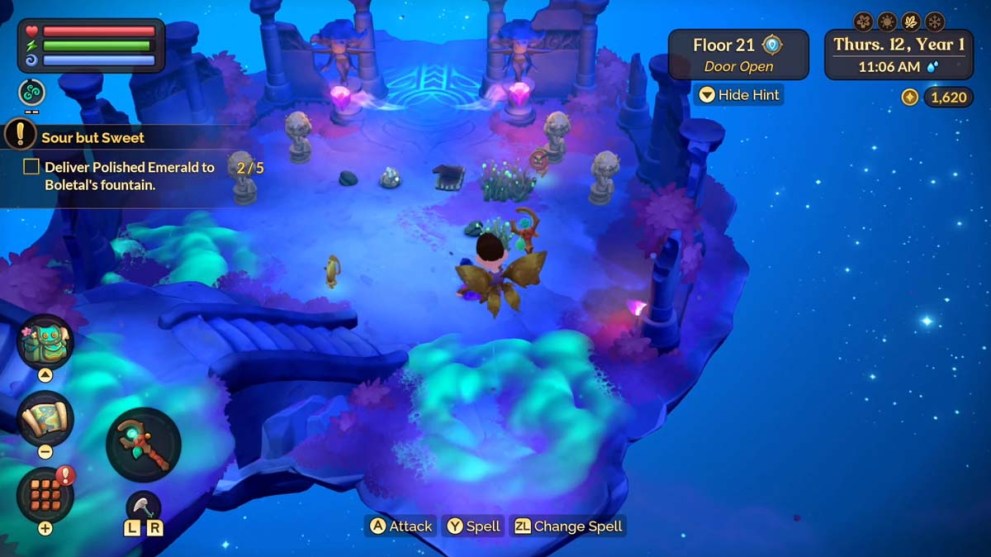
If everything is so far sounding uninspired to the point of being straight-up generic, that’s because, for the most part, it is. Fae Farm is a game built on the reassurance that you’ll have seen all this before, but never quite so polished. There are no surprises, just pleasant vibes. When it comes to making a game that’s the perfect tonic for the end of a rough day, there’s strength in simplicity.
And that’s fine, or at least it would be if not for one crucial area of the game where comforting familiarity gives way to aching blandness.
There are two core problems with Fae Farm’s NPCs. Firstly, they don’t look interesting. Secondly, they don’t say anything interesting.
Being able to build relationships — romantic or otherwise — is arguably what makes the cozy genre as popular as it is. More than any narrative arc, interacting with the folks that come and go as the seasons pass is what gives you a sense that the things you’re doing are worthwhile. It’s the difference between decorating a house in a piece of level editing software and decorating one in a world that feels alive.
In Fae Farm you feel as though you’re trying to hold things together on an island full of automatons. The citizens of this would-be prototype Westworld repeat the same handful of lines ad nauseam — each one apparently sharing the same handful of stock phrases.
They all have roles that they carry out diligently no matter the season, weather, or time of day, but these jobs — mayor, fisherman, furniture seller — are secondary to the island’s primary obsession: coziness.
Look, we get it, cozy games are the current big thing, and Fae Farm has been designed from the top down with peak coziness in mind. But rather than let the player decide for themselves if the game has succeeded in putting them in such a state of being, the island’s citizenry repeatedly has to tell you that something will make you feel ‘cozy’, or that they can sell you a ‘cozy’ item.
The word is repeated so much that it makes you start to feel as though you’ve unwittingly partaken in some kind of thought experiment whereby the developers are attempting to see if they can induce a state of ‘coziness’ in the player through simple repetition.
You can build friendships with many of the NPCs that bumble around the island, and you can engage in romantic relationships with a select handful. One of the most memorable things about these kinds of games is feeling an organic interest in a character starting to grow, and then being given the opportunity to take it further. By learning more about them as they become more comfortable opening up to you, your connection to your own character grows as well. Things do open up a little bit as you engage the NPCs along their relationship tracks, but it still feels too distant and they’ll still be repeating the same lines too often.
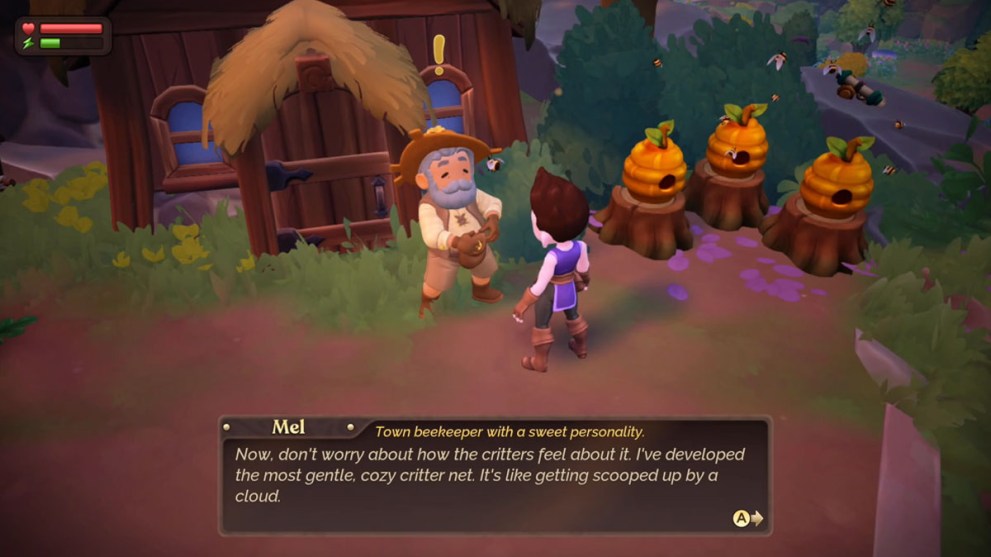
In its quest for coziness, Fae Farm seems to want to put up a barrier between you and any emotions at all. There’s no fear, challenge, or heartache to be had here, but similarly, there’s little joy or triumph. What should be an escapist fantasy instead feels more like emotional escapism.
Fae Farm is too easy to pick up and play not to be a success among farming sim fans. Many of the genre’s long-standing rough edges have been smoothed out to create a game that feels modern, and yes, very cozy. The moment to moment gameplay is pure, frustration-free pleasure. The storybook world comes alive with a contrast of warming, autumnal tones, and luminescent purples and blues. There are heaps of systems to play with and everything feels integrated into one harmonious package.
It’s a shame then, when so much of the rest of the game has been thoughtfully designed to provide an unparalleled level of satisfaction, that Fae Farm should fall short in a single, but all-important aspect of the cozy experience. Creating a Mr. Resetti or a Garrus — a character that’s easy to love, or at least has meme potential, is no small thing to ask for. If you put the work in you’ll find glimmers of personality in some of Far Farm’s islanders, but they’re too thinly drawn to make any real connection with.
As a farming sim and a lite RPG Fae Farm does everything right. Phoenix Labs have clearly thought long and hard about how to do away with all the mechanical niggles from other games in the genre. Because of that, Azoria is a world you’ll happily dip back into for an hour every night over the course of months or years. I only wish it was a little braver, a little quirkier, a little more human. As such, Fae Farm feels consigned to simply being the hot new thing in the cozy community, rather than an experience that’s as memorable and beloved as the games it has done so much to build upon.
- Very satisfying gameplay loop.
- Modern presentation and quality of life features.
- Instantly welcoming.
- Lifeless NPCs.
- Not emotionally engaging.

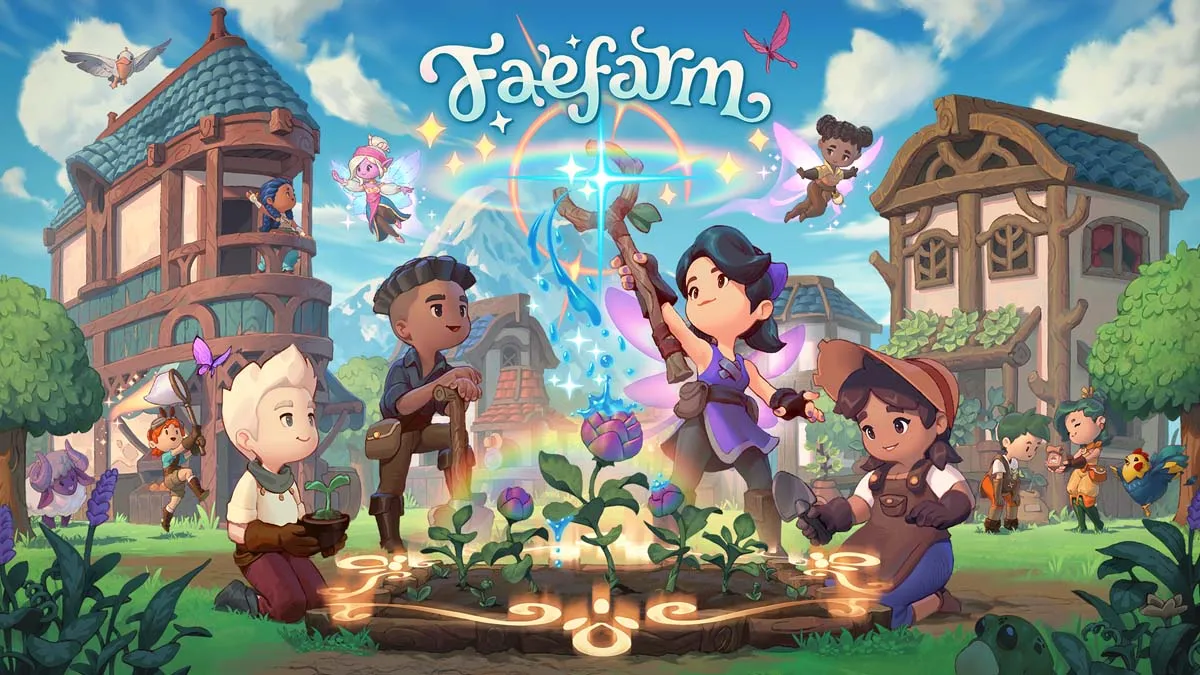

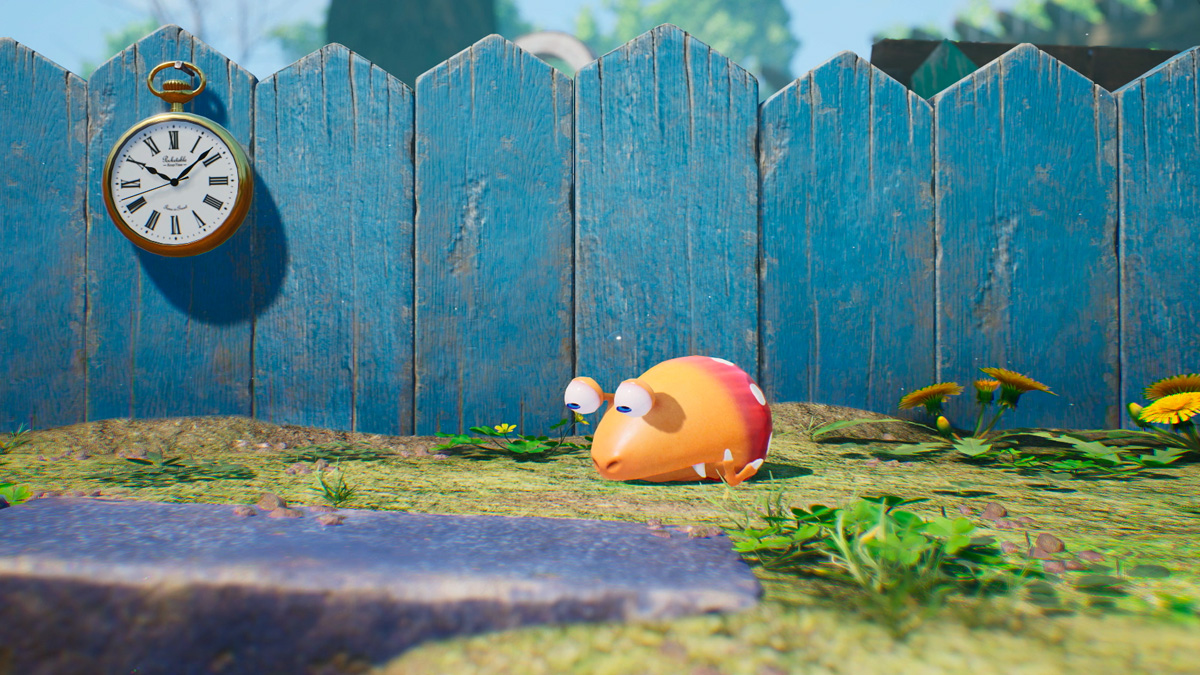









Updated: Sep 6, 2023 08:36 am